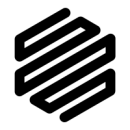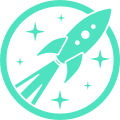
Hiring the most qualified engineers as a response to increased demand might benefit a team in certain areas. But knowing what qualifications and skillsets contribute to maximum collaboration and aligning project objectives as necessary?
That’s the secret sauce to rapid growth — and the industry is seeing a lot of it.
According to the U.S. Bureau of Labor Statistics, software developer employment is projected to increase 22 percent from 2019 to 2029, a growth rate much faster than the average of all other occupations
Built In Boston sat down with three software engineers doing very different things within their growing organizations to learn about how their companies prioritize a strong team connection to facilitate the production of products and features they’re proud of.
At Peapod Digital Labs, engineers must keep up with the evolving demands of their consumer base. While COVID-19 has changed their customers’ needs and experience preferences, Senior Software Engineer Ankita Sharma says that it has also helped her team communicate more cohesively than ever before to plan their next move.
Give us a bit of insight into your tech stack. What are some of your favorite tech tools your team is using?
My team is the most unique across all twelve or so scrum teams in program design language. We are the only group that has an entire full stack. I have been working on the front-end tech stack with mainly JavaScript; Vue JS framework; webpack for building files, deployment, and minimizing bundles; Tailwind CSS framework for CSS capabilities; SonarQube for automation; and GraphQL for client data services.
Our project for the past year has been focused on migrating the old tech stack from Angular JS to Vue JS to increase website performance and provide a better customer experience. I really like Visual Studio code as an editor or code editor for JavaScript.
What’s the most interesting or challenging project you’re working on right now, and what do you enjoy most about it?
I am the lead of an amazing acting front-end team responsible for the whole payments area of our e-commerce website, PRISM. We give customers the capability to have multiple payment selections like MasterCard, Visa Card and so on in the My Accounts area of the website. We also give them the ability to add new credit or debit cards or set up a preferred payment.
Post-COVID-19, our customer preferences and needs have changed a lot. We’re consciously working toward offering better experiences with future projects, like Apple Pay as a payment type. Payments are a very sensitive part of the customer’s information, so we need to make sure that we are protecting their info with encryption logic in the code.
Every day I get a new challenge or new problem to solve, and that’s what excites me and motivates me to come to work.”
What’s something unique about your team from other engineering orgs you’ve been part of?
We follow a lot of Agile scrum practices and have biweekly release cycles of our work where we can release a new feature that we have been working on. Culturally, I feel like we’re a very diverse group of members in that team.
Everyone has so much to bring to the table. We brainstorm ideas together. In remote times, communication is the most important and challenging part. So we often hop on a Teams call, a Slack call or Zoom to make sure we’re resolving any issues and answering questions as much as we can.
Every day I get a new challenge or new problem to solve, and that’s what excites me and motivates me to come to work.
With a team of engineers specializing in 3D metal and carbon fiber printing, big projects come together with small solutions for manufacturing innovation at Markforged. Though each member is highly skilled individually, Senior Engineering Technician Faisal Mayanja believes that growing together personally and professionally over the years has been the key to success.
Give us a bit of insight into your tech stack. What are some of your favorite tech tools your team is using?
As an engineering technician, I do quite a bit of design work. Working for Markforged allows me to 3D print solutions. After many successful prints, I lean towards wanting to print parts to solve issues. So my tech stack consists of Solidworks or Fusion 360 for the back end, and Eiger (Markforged software) on the front end. The best part is that I get to print cool stuff for my home and car as well!
What’s the most interesting or challenging project you’re working on right now, and what do you enjoy most about it?
I’m currently working on upgrading some of our equipment at our manufacturing plant. It’s a big project that challenges me in ways that pushes me to learn new skills, but also is satisfying to see the outcome.
I’m working with some very talented individuals who I get to learn from every day. But what I enjoy most about this project is presenting this functioning tool, after all the parts come together from just an idea. I am proud of that.
Although individually we’re all highly skilled, we work together to function as a unit.”
What’s something unique about your team from other engineering orgs you’ve been part of?
Although individually we’re all highly skilled, we work together to function as a unit. We’ve worked as a team for a long time but we’ve also all grown quite a bit professionally and personally. I’ve learned so much in my professional and personal life working with this group. I honestly believe this is why we’ve been very successful all these years.
Built on strategic insurance plans and investment decisions for their clients, MassMutual’s engineering team is always looking to improve their fintech interface experience for the user on the go – like constructing a tech stack from the ground up for better mobile app interaction.
Give us a bit of insight into your tech stack. What are some of your favorite tech tools your team is using?
At MassMutual, we architect and develop advanced mobile capabilities for customer-facing and advisor-facing mobile applications. Like many tech-based organizations, our tech stack is always evolving.
As a baseline, we code our apps in MVVM (model-view-viewmodel) design pattern and leverage a variety of mobile frameworks (Cocoapods, Gradle, Maven, Fastlane, etc.) In terms of a front-end programming language, our apps are based on native mobile coding languages such as Swift for iOS platform and Kotlin for Android platform.
Emerging is a term we coined into our chapter in 2020 when we incorporated the interactive voice response team within our digital experience teams. This team is a serverless and SaaS team. We are using AWS-based service for end-to-end development.
What’s the most interesting or challenging project you’re working on right now, and what do you enjoy most about it?
With our initiative on making our digital journey mobile-enabled, it is really important for us to deliver an industry-leading mobile experience.
Our team has been working on a greenfield project to improve the experience of lead delivery and management for our advisor population. It enables our advisors to easily manage and contact leads from various sources. This project is interesting and challenging because we know it could be a game-changer for our advisors.
We took a mobile-first approach to allow them to process a variety of leads at their fingertips. Technically, this project also requires us to build both our front and back end from ground zero. To do so, we wrote a brand new tech stack based on event-driven architecture. We also collaborated closely with our data science partners to incorporate different types of data modeling into the app.
This culture really enabled our team to be better and pushed every member to be their best.”
What’s something unique about your team from other engineering orgs you’ve been part of?
Our engineering team has a strong collaboration culture. I can even say it is one of the strongest among any teams I have worked on so far. This culture really enabled our team to be better and pushed every member to be their best. It also allows team members to learn from each other, share best practices and have fun. I am very proud of what we are achieving.











